Will Everglade pythons eat Patagonian beavers?
11 December 2024 5:00pm
AI Researcher / Doctoral Candidate
11 December 2024 1:45pm
Looking for advise on a suitable VHF receiver
25 November 2024 7:52pm
3 December 2024 5:35am
Hello @robbiemp
My method may not be the best at the moment, but I’ll share the results from my previous tests. Here’s what I’ve tested: “DIY using SDR connected to a smartphone as a radio telemetry receiver.”
I have a VHF receiver that works with SDR and an Android smartphone. I’ve tested it with a VHF tag that I built myself, "My VHF Telemetry Tag Building Project From Scratch."
It depends on whether you need data or just audio. If you need data, SDR may not perform very well. But if you’re just after audio signals, it can work similarly to a regular VHF receiver. By using a Yagi antenna and connecting the SDR to the smartphone, it can work for any frequency range you want. I used 148-151 MHz, but you can use more than that.
Please understand that it works similarly to a commercial VHF receiver, but it may not be as good as the ones available in the market due to various limitations. However, it can still be used. I tested it with a Yagi antenna that I made myself (but if you already have an antenna, you can use it too), and I was able to detect my VHF tag from a distance of about 1.2 kilometers and 800 meters for the VHF tag I received from @Rob_Appleby . This is just a rough test.
If you need a receiver that can operate across a wide range of frequencies, I think the RTL-SDR would be a good option as well.
This may not be the best method, but it works just fine. Thank you, and if you have any questions, don’t hesitate to ask me.
10 December 2024 10:07am
Thanks so much Chittakon. I have ordered the parts, and will be trying the phone method.
Mirror images - to annotate or not?
5 December 2024 8:32pm
7 December 2024 3:18pm
I will send you a DM on LinkedIn and try to find a time to chat
8 December 2024 12:36pm
I made a few rotation experiements with MD5b.
Here is the original image (1152x2048) :

When saving this as copy in photoshop, the confidence on the mirror image changes slightly:
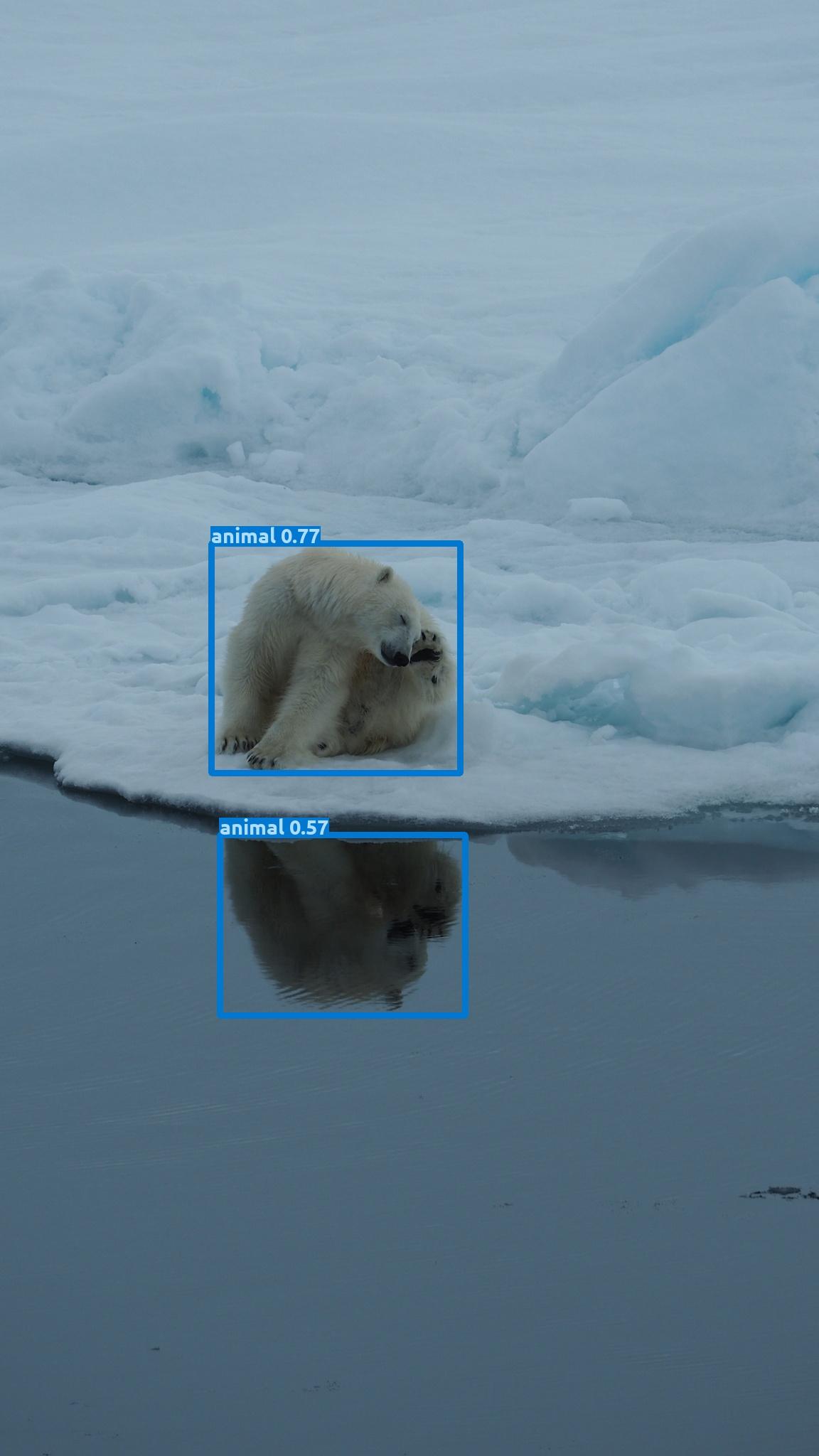
and when just cropping to a (1152*1152) square it changes quite a bit:
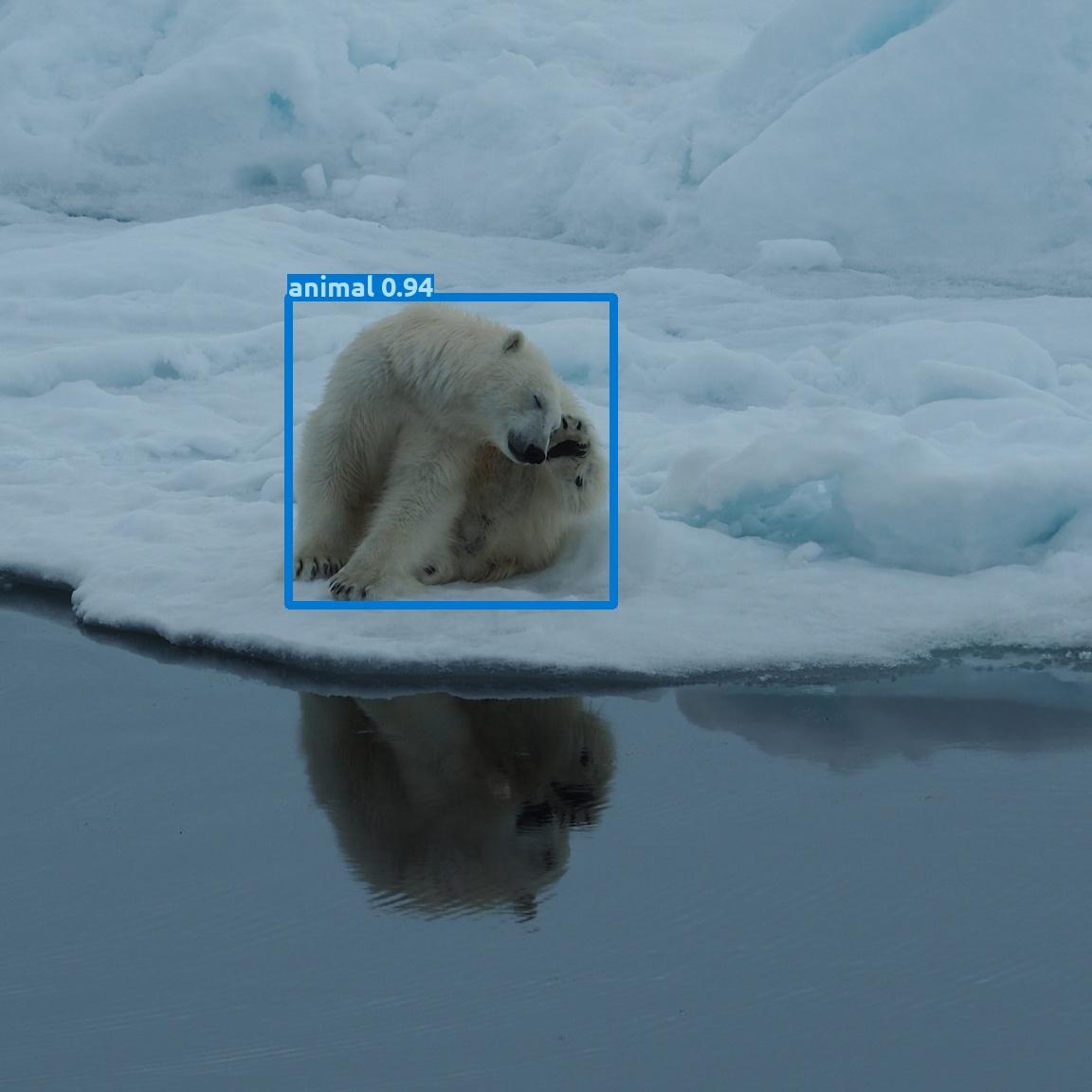
The mirror image confidence drops below my chosen threshold of 0.2 but the non-mirrored image now gets a confidence boost.
Something must be going on with overall scaling under the hood in MD as the targets here have the exact same number of pixels.
I tried resizing to 640x640:
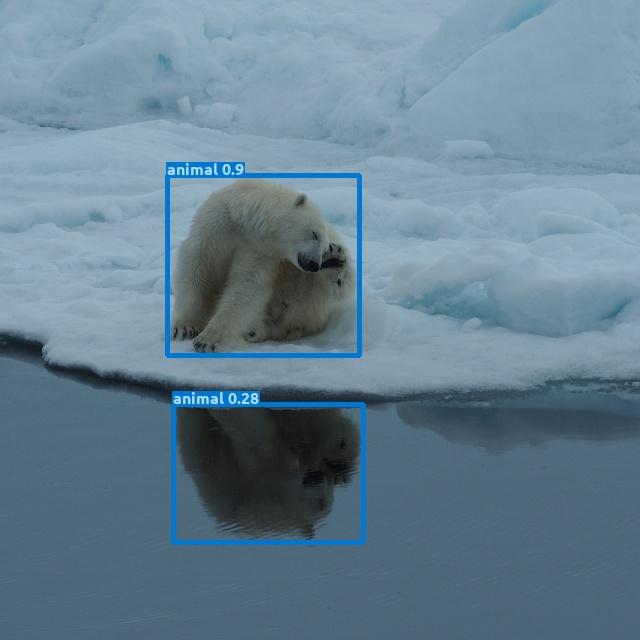
This bumped the mirror image confidence back over 0.2... but lowered the non-mirrored confidence a bit... huh!?
My original hypothesis was that the confidence could be somewhat swapped just by turning the image upside down (180 degree rotation):
Here is the 1152x1152 crop rotated 180 degrees:
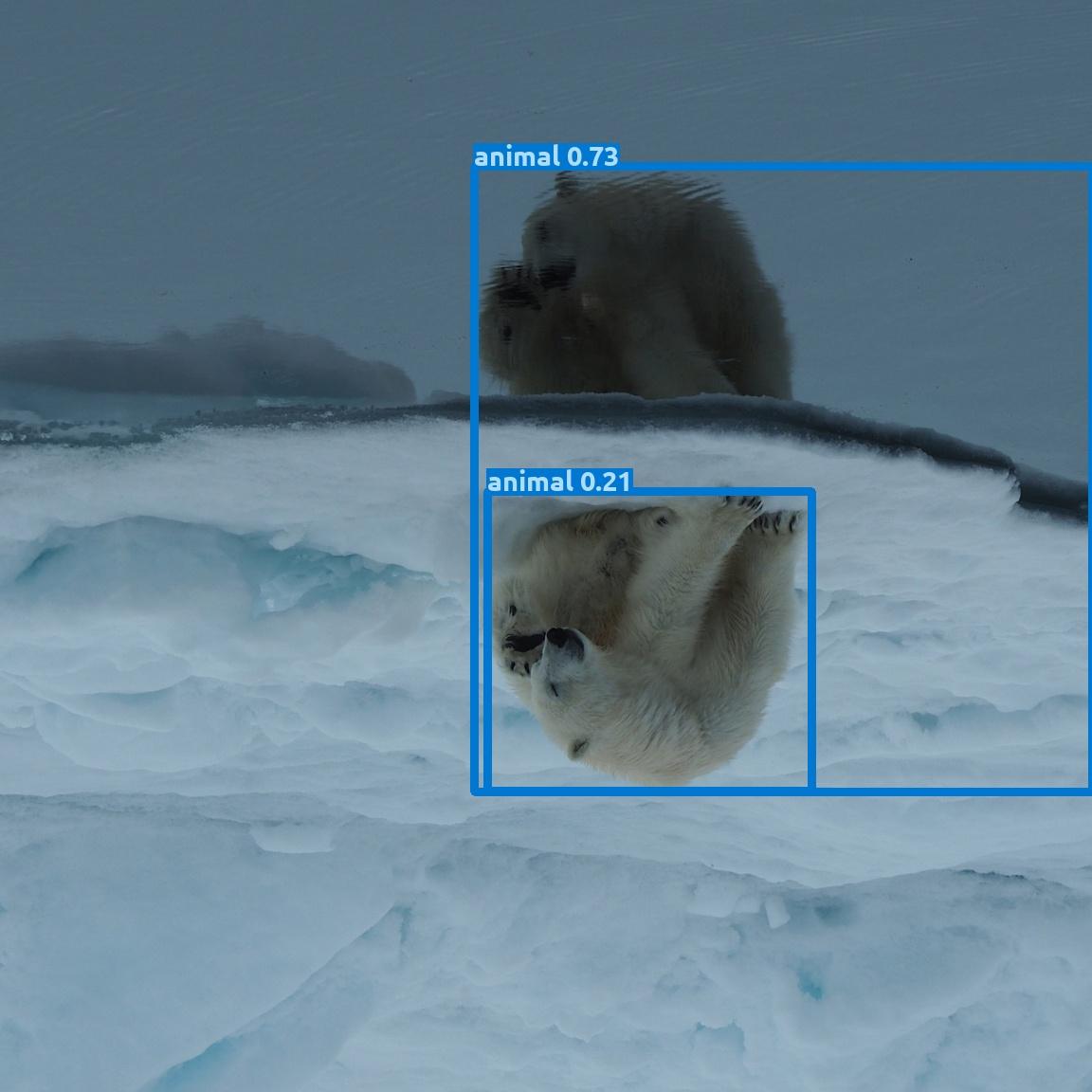
The mirror part now got a higher confidence but it is interpreted as sub-part of a larger organism. The non-mirrored polar bear had a drop in confidence.
So my hypothesis was somewhat confirmed...
This leads me to believe that MD is not trained on many upside down animals ....
- and probably our PolarbearWatchdog! should not be either ... ;)
9 December 2024 4:27pm
Seems like we should include some rotations in our image augmentations as the real world can be seen a bit tilted - as this cropped corner view from our fisheye at the zoo shows.
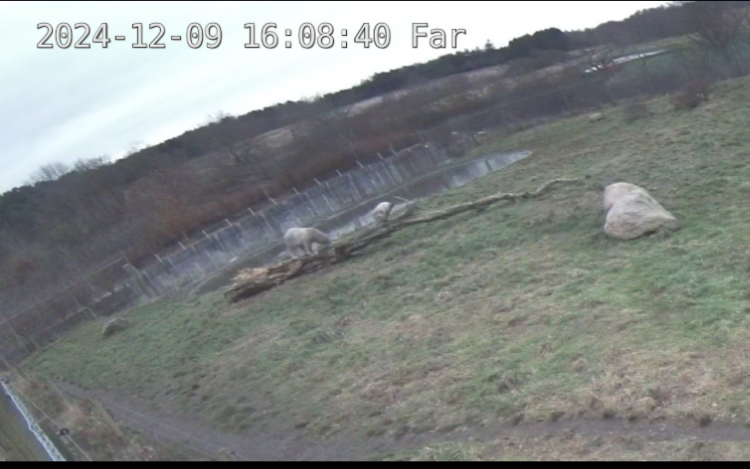
Advancements and Applications of Drone-Integrated Geographic Information System Technology—A Review
Chamada da Teia de Sociobiodiversidade
5 December 2024 8:27pm
Recommended lora receiver capable microcontrollers
28 November 2024 8:40am
4 December 2024 4:21pm
@ioanF , you can do a little bit better than 10 ma. I have here an adalogger rp2040 feather with DS3231 RTC wing and a I2S Mems microphone. During "dormant" mode running from xosc and waiting for DS3231 wakeup I get 4.7 ma . This includes about 1 ma for microphone and DS323 together. OK, that is still 3 ma higher than 0.7 ma RP2040 documentation is said to claim. I guess, there is some uncertainty with the AT35 USB tester I'm using. Putting the LDO enable pin (EN) to ground, the USB tester said 1 ma, which may be dominated by the offset of the tester as the LIPO charger as remaining component should only consume 0.2 ma (max).
Edit (for the records): After 'disabling' all GPIO but the RTC wakeup pin, the system (RP2040+DS3231 RTC+ I2S Mems microphone) consumes only 1.8 mA. I guess I`m now close to the clamed dormant power consumption!
4 December 2024 8:24pm
A good candidate for low power hibernation and processing power is the Teensy 4.1 from PJRC, which is an ARM Cortex M7. standard clock is 600 MHz and there is provision for 16 MB PSRAM. It hibernates at 0.1 ma. What is more important than the specs, there is a very active (the best IMHO) community Search | Teensy Forum with direct connection to the developer (Paul Stoffregen). For a simple recorder consumption is 50% higher than RP2040 (Teensy running at 24 MHz and RP2040 running at 48 MHz, but RP2040 is M0+ and not a M7).
5 December 2024 6:08am
Thanks! The Teensys are nice for processing power if choosing an external Lora board I’d say that’s a good choice. I started with teensies, there was a well supported code base and certainly well priced.
My preference is to one with onboard Lora. I’ve used one one onboard murata Lora before. It was good both for low power operation and it’s Lora operation.
For a transmitter the grasshopper if it’s still being made is quite good for small distances are being made because it has an onboard ceramic antennae. Which is good for about three houses away, although one was also received > 20 km away.
Talk - Open source hardware for more equitable and sustainable conservation science
4 December 2024 5:54pm
Fauna & Flora SMART Competences Consultancy
4 December 2024 2:21pm
Individual Identification of Snow Leopard
25 November 2024 5:39am
1 December 2024 3:00pm
Hi Raza,
I manage a lot of snow leopard camera trap data also (I work for the Snow Leopard Trust). I am not aware of any AI solutions for snow leopards that can do all the work for us, but there are 'human-in-the-loop' approaches, in which AI suggests possible matches and a human makes the actual decision. Among these, are Hotspotter and the algorithm in WildMe.
You can make use of Hotspotter in the software TrapTagger. I have found this software to be very useful when identifying snow leopards. Anecdotally, I think it improves the accuracy of snow leopard identifications. But, like I said, you still have to manually make the decisions; the results from Hotspotter are just a helpful guide.
The other cutting edge solutions mentioned here (e.g. MegaDescriptor, linked above) will require a massive dataset of labelled individuals. And considerable expertise in Python to develop your own solution. I had a quick look at the paper at they were getting around 60-70% accuracy for leopards, which is a much easier species than snow leopard. So I don't think this approach is useful, at least for now. Unless I've misunderstood something (others who deeply understand this, please chime in and correct me!).
Incidentally, I did try to gain access to WildMe / Whiskerbook last year but wasn't successful gaining an account. @holmbergius can you help me out? That would be appreciated, thanks!
Best of luck Raza, let me know if I can help more,
Ollie
1 December 2024 4:38pm
An example of Hotspotter doing quite a good job, even with blurry images, to successfully draw attention to matching parts of the body. This is a screenshot from TrapTagger, which very helpfully runs Hotspotter across your images.
Note that I wouldn't necessarily recommend ID'ing snow leopards from such poor imagery, but this just demonstrates that Hotspotter can sometimes do quite well even on harder images.

3 December 2024 11:03am
Hi Raza,
As @ollie_wearn suggests, if think traptagger will be the easiest for you:
You just have to follow the tutorial there:
TrapTagger Tutorial - YouTube
The full TrapTagger tutorial. It is recommended that you start here, and watch through all the videos in order. You can then revisit topics as needs be.
The person in charge of Traptagger is also very responsive.
best,
Open Sustainable Technology directory
2 December 2024 4:17pm
Is there relation between Economic GDP and Geospatial tools?
12 November 2024 9:54am
2 December 2024 11:16am
Thank you so much Vance, this is very helpful information.
2 December 2024 11:23am
This's insightful idea, thanks Tim.
2 December 2024 11:23am
Very helpful.
conservation education assessment
27 November 2024 7:38am
2 December 2024 8:20am
assessing any intervention depends on your objectives. So I would recommend that you have a good look at these and try to examine how your conservation education can be linked to that. That should then form the basis of your evaluation. Ideally you would compare it to a group of similar students who did not get the education to measure the change.
My VHF Telemetry Tag Building Project From Scratch
15 September 2024 2:32pm
14 October 2024 9:12am
Hi, I understand the Notch filter, I confirm there is no hardware modification, and this is the module I am using.I just set the module to work at the frequency I want to use, to test it. I think in real use, you can advise everyone better.
https://www.nicerf.com/fsk-front-end-module/433mhz-rf-module-rf4463pro.html
I only modified the start frequency. You may be able to give a better answer than me. You can access the entire project on my drive.
https://drive.google.com/drive/folders/1jX0e9Ul5pmmnUhKd2L4jNMg8V0WxpFaG?usp=drive_link
28 November 2024 7:20am
@jcturn3 I’ve added the details for creating the tags, and I hope it will be helpful to you.
30 November 2024 11:05pm
Wonderful thank you! I'll look into it shortly.
Made 4 Geek
Conservation Data Strategist?
20 November 2024 3:50pm
22 November 2024 2:28pm
Great resources being shared! Darwin Core is a commonly used bio-data standard as well.
For bioacoustic data, there are some metadata standards (GUANO is used by pretty much all the terrestrial ARU manufacturers). Some use Tethys as well.
Recordings are typically recorded as .WAV files but many store them as .flac (a type of lossless compression) to save on space.
For ethics, usually acoustic data platforms with a public-facing component (e.g., Arbimon, WildTrax, etc.) will mask presence/absence geographical data for species listed on the IUCN RedList, CITES, etc. so that you're not giving away geographical information on where a species is to someone who would use it to go hunt them for example.
29 November 2024 12:13pm
Hello, I am experienced in conservation data strategy. If you want to have a conversation you can reach me at SustainNorth@gmail.com.
29 November 2024 5:51pm
Bird Monitoring Data Exchange is a standard often used for birds data.
Catch Up With The Variety Hour: November 2024
29 November 2024 3:03pm
Question about black coral and octocorallia identification
25 November 2024 2:19pm
28 November 2024 6:31am
Hi Muhammad,
The best reference I know of covering shallow soft corals around Indonesia is Fabricius & Alderslade, its not a complete guide to everything you might see there, but the best thats currently available.
Note that you can only reliably ID octocorals from the sclerites and these need examination under a microscope, which require destructive sampling of a small amount of tissue, but these are intact in dried specimens.
Hope that helps
Basics to Mastery: The Ultimate Course on Statistical Methods in R
27 November 2024 4:17pm
Ethics in Conservation Tech - Beyond Morality
26 November 2024 1:21pm
26 November 2024 3:05pm
I completely agree that ethics in conservation technology must address the dual challenge of protecting both the people placing the equipment and those whose lives might inadvertently be surveilled. Encryption is indeed a critical tool to safeguard data and mitigate risks, especially in sensitive deployments like anti-poaching efforts.
You’re absolutely right to point out the broader challenge of corruption or misuse by authorities who control the platforms. This raises the question of governance and oversight—how do we design not only the technology but also the systems of accountability around its use? For example:
• Could we develop decentralized systems where no single authority has full control over sensitive data?
• Should conservation tech projects include mandatory ethical reviews, akin to institutional review boards in academic research, to prevent misuse from the outset?
Your example of anti-poaching tech highlights how ethics isn’t just about “what” we do but also “how” we do it. Ensuring anonymity in the data trail or creating “dummy” deployment footprints could be practical steps to protect the individuals involved.
Would love to hear your thoughts on how we can move toward implementing these safeguards. Are there successful case studies or projects you’ve seen where encryption and oversight have been effectively integrated?
Looking forward to continuing this conversation!
26 November 2024 3:23pm
Well I do have an upcoming product release that uses both secure boot and encryption for a camera trap solution as well as for an ARU solution. So for my products, this part is addressed. If you captured such a device you could not read any data on it and there would be no digital clues leaked as to the owners. So you can see now more easily understand my eagerness to highlight this particular part of the solution 😊
But no, there are no case studies involving it for my products are they are brand new.
The corruption part of it is much harder to deal with. However, in the case of camera traps for example, one could in principle, if using AI detectors, don't take any pictures if people are in view. That particular piece of functionality would be available with my product. But it does come at a price, because matching people also can provide a means to protect the equipment.
Perhaps one could start out in good faith. But if it's abused, then tighten it up. The social problem is way harder. but to determine that it was abused might in fact require even more surveillance initiallly. Unless you waited for feedback from the people on the ground to report. However, that's likely to easily fail as they would have to know how to provide the feedback in the first place. It might also be difficult for deployment where a lot of people are naturally.
Audio recorders could also do voice detection and mute or delete sections that contain voice from their recordings.
I have a feeling you were more interested in persuing the social side of it, no ? That's great of course, cause that's where the harder challenge is.
27 November 2024 7:10am
Thanks for sharing this—it’s exciting to see how your product is tackling these challenges head-on with encryption and AI solutions. The idea of AI-driven detection to avoid capturing people while still protecting equipment is such a smart balance.
You’re absolutely right that the social side is the harder challenge. Maybe co-designing these solutions with local communities could help build trust and make feedback systems more practical? It’s tricky, but I’d love to hear how you see these ideas evolving as your product rolls out!
Looking forward to more on this!
Recovery Ecology Post Doctoral Associate - San Diego Zoo Wildlife Alliance
26 November 2024 11:47pm




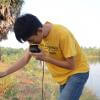










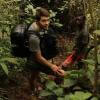


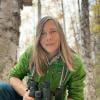




2 December 2024 10:13pm
Thanks so much Robin for the contact information. Very useful!
Ravi